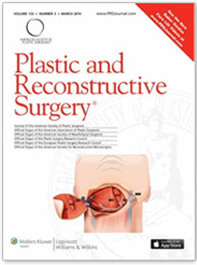The 2014 March issue of Plastic and Reconstructive Surgery, the official medical journal of the prestigious American Society of Plastic Surgeons (ASPS), published our most recent study that outlines our theory and principles of what makes our megavolume fat transfer to the breast for augmentation and reconstruction so successful.
Summary: This article describes the theory and principles behind the authors’ success in megavolume (250-ml range) autologous fat transfer to the breasts. When large volumes are grafted into a tight space, the interstitial fluid pressure increases to impair capillary blood flow and the crowded graft droplets coalesce into lakes, with poor graft-to-recipient interface. These factors have historically restricted the volume of fat that can be grafted into small recipient breasts. The decreased interface increases the distance oxygen must diffuse to reach the grafted adipocytes, causing central necrosis to occur before neovascularization. The increased interstitial fluid pressure reduces capillary radius, reducing oxygen delivery to grafted adipose tissue.
The Brava external expansion device harnesses the regenerative capabilities of mechanical forces to preoperatively increase the volume and vascularity of the recipient site, allowing megavolumes of fat to be grafted diffusely without significantly decreasing graft-to-recipient interface or increasing interstitial fluid pressure. The application of these principles has allowed the authors to successfully graft megavolumes of fat into the breasts of over 1000 patients with substantial long-term retention.